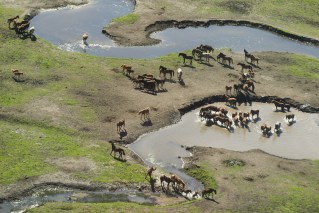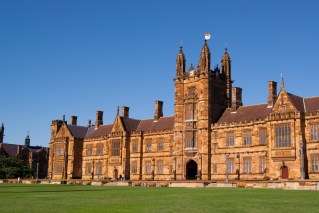Alan Kohler: Australia’s solar tsunami to trigger coal collapse


Alan Kohler says the coal-fired power industry is going broke. Photo: TND
The coal-fired power generation industry is on the brink of collapse.
Although coal generation must end eventually if we’re to have zero carbon emissions by 2050, the transition to renewables is happening a lot faster than expected, and neither the national grid nor the coal industry is ready for it.
The main reason the industry and government have been caught out is clear: The lack of clear policy leadership from Canberra has led to confusion, under-investment and complacency.
The transition is happening quickly because of a boom in household rooftop solar, and ironically the coal generation companies themselves are partly to blame.
They are cutting their own throats by offering generous feed-in tariffs – that’s the price households get for selling surplus power back into the grid – in the drive to sign up those customers for when they might need to buy extra power at night and on cloudy days.

A boom in rooftop solar is leading the transition from coal to renewables. Photo: Getty
Part of the problem seems to be that retail sales and power generation are separate divisions of the big energy companies – AGL, Origin and EnergyAustralia – run by different people with conflicting KPIs.
As a result there is now 11 gigawatts of rooftop solar now installed around the country, which is equivalent to four Eraring power stations, or five Loy Yang As.
Research led by Tristan Edis of Green Energy Markets, published on Wednesday, estimates that by 2025 that number will be 22GW – almost equal to the maximum capacity of the entire fleet of coal-fired power stations in Australia.
And that’s without large-scale solar farms and wind power, both of which are also expanding rapidly because of all the capital flooding into the sector from global pension funds looking to exit fossil fuels and support renewables.
With marginal generation costs of zero for solar and near zero for wind, coal generators will soon start losing money overall, as daytime prices in particular collapse. In fact, the wholesale price is sometimes negative during the day.
Mr Edis continues: “Australia’s National Electricity Market (NEM) is in the process of being swamped by a tidal wave of new power supply and storage.”
“The financial viability of several coal generators in the NEM will become severely compromised by 2025 such that closure becomes an attractive or even unavoidable choice…”
Their only saviour might be that as each major power station closes there is a brief spike in prices so that profit improves for a while.
That’s what happened after the Hazelwood power station in Victoria’s Latrobe Valley closed four years ago and the profits of those left behind rose, but not for long.
By the way, Origin’s Eraring in NSW looks like being the next to go after AGL closes Liddell next year.

The Liddell power station in the NSW Hunter Valley will officially close in 2023. Photo: AAP
While the coal power stations still have a good market for their output at night when the sun isn’t shining, the solar panels on so many of their customers’ roofs has meant that daytime demand is so small that they are fighting each other to try to keep operating continuously.
While solar generators and gas plants can be switched on and off easily, shutting coal plants is a big deal – they take hours to start up again and then several more hours to reach full capacity. By then, everyone’s gone to bed and turned off the heaters or air-conditioners.
And before long there are likely to be enough batteries, both large scale and small ones in houses, to store the solar power from the daylight hours and produce it at night, replacing coal entirely.
This is all good and necessary, except that Australia’s transmission network is entirely designed to bring large amounts of electricity from coal regions like the Latrobe Valley and the Hunter Valley to the major cities.
By contrast solar and wind farms are being built all over the place and the power lines to them are not necessarily built for high voltages.
Billions of dollars will have to be spent upgrading the transmission network, probably by the federal government.
Also, more storage than Snowy 2.0 – the big pumped hydro project announced by Prime Minister Scott Morrison two years ago – will be needed to make sure there’s enough dispatchable power as the coal generators close over the next few years.
One thing that would not work would be a government-subsidised, coal-fired power station to replace the ones that are closing, as pushed by some on the coal wing of the Coalition.
There is so much rooftop solar being installed that it would only be able to sell power at night, and by the time it was built there would be enough battery storage in the system to remove the night-time market as well.
So really the only energy plan the federal government needs is something like what the NSW Liberal government is doing: Making sure renewable energy is built where there is existing transmission, and either building or encouraging enough storage that as coal-fired plants close there aren’t any gaps.
Getting caught up on whether to commit to net-zero emissions by 2050, and trying to pacify the coal wing of the Coalition by distracting them with talk about technology, is a train to nowhere.
The train has left the station. Australia’s electricity system is going renewable, fast, in spite of government policy – not because of it.
The system will be 50 per cent renewable in just a few years, and it’s being driven by millions of households putting solar panels on their roofs because they want to do their bit, and because it seems like a good idea.
Alan Kohler writes for The New Daily twice a week. He is editor in chief of Eureka Report and finance presenter on ABC News








